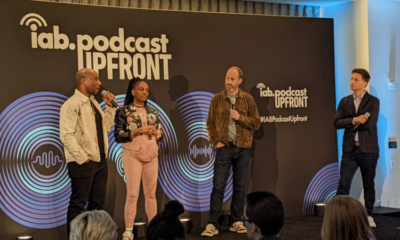The revelation that Gannett sent billions of ads to the wrong places is raising fresh concerns about reliability in programmatic advertising.
The Wall Street Journal reports the publisher “provided inaccurate information to advertisers for nine months, misrepresenting where billions of ads were placed.” In particular, many advertisers thought they were buying space on the company’s flagship USA Today site but wound up on one of its local outlets instead.
Get the daily newsletter digital marketers rely on.
In addition to USA Today, Gannett owns news properties in 46 U.S. states, ranging in size from big city daily newspapers to weeklies that cover small towns. Ad space is sold on those sites through real time digital auctions.
In one instance, an ad meant to target a USA Today reader went to a reader of the Indianapolis star. In another case, ads meant for the daily Sarasota, Fl, Herald-Tribune ran on the website of a bi weekly newspaper for a village in New Mexico.
Gannett issued a press release apologizing for the mistake and saying, “The data parameter issue was caused due to a caching error when the Company implemented changes to how data is passed from the publisher to the ad exchanges.”
The brands affected by the mistake included Sears, Nike, Adidas, Ford, State Farm, Starbucks, Kia, Marriott, Capital One, American Red Cross, and Spotify.
Why we care: From all reports this appears to be a technical mistake by Gannett and nothing else. But the issue it brings up is much larger. This went on for nine months before being noticed. It was caught by a team of researchers not a brand manager, agency or, most importantly, an ad verification guarantor. Given this, how can any company have faith that their programmatic advertising spend is reaching the audience they want.
It’s an issue of visibility, and it’s not the first time we’ve seen this. Stories about faults in Facebook’s ad metrics have floated around for years. Just as walled gardens offer limited visibility into ad performance, advertisers taking advantage of programmatic marketplaces have much less understanding of where there ads are appearing than if they were buying publisher inventory in the traditional way.











![YouTube Ad Specs, Sizes, and Examples [2024 Update] YouTube Ad Specs, Sizes, and Examples](https://articles.entireweb.com/wp-content/uploads/2024/06/YouTube-Ad-Specs-Sizes-and-Examples-400x240.jpg)
![YouTube Ad Specs, Sizes, and Examples [2024 Update] YouTube Ad Specs, Sizes, and Examples](https://articles.entireweb.com/wp-content/uploads/2024/06/YouTube-Ad-Specs-Sizes-and-Examples-80x80.jpg)








You must be logged in to post a comment Login